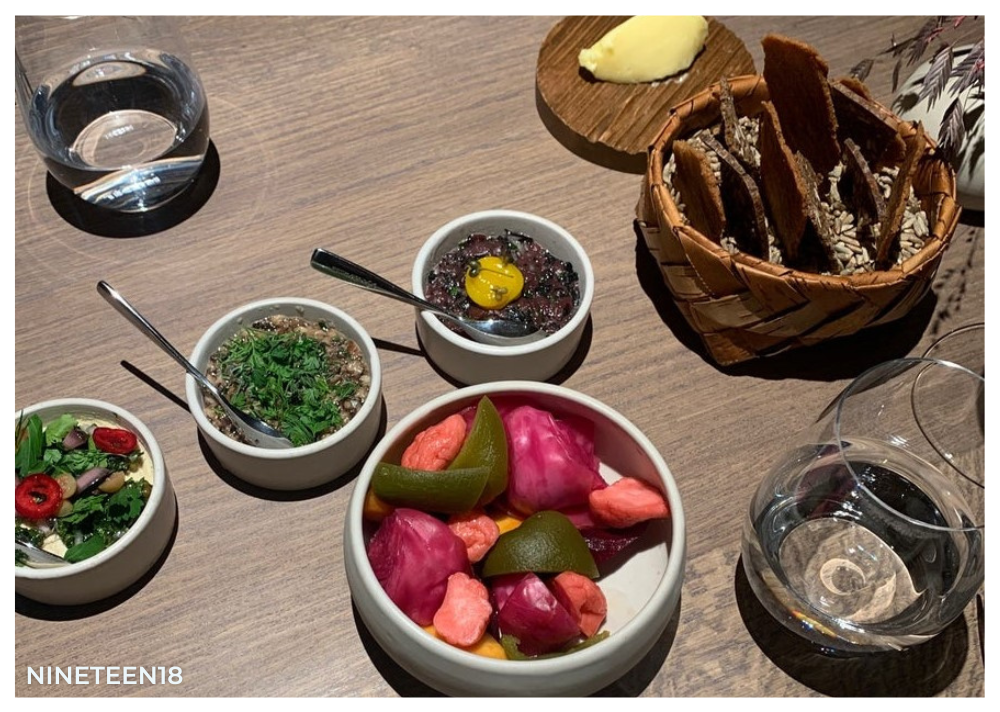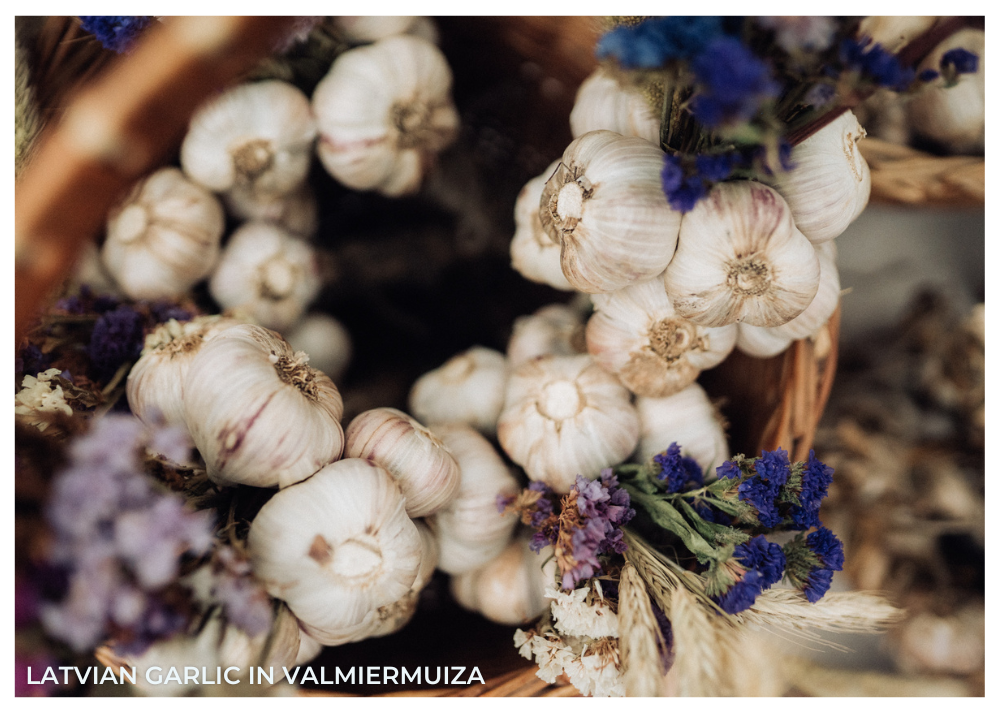The natural bounty from the cold-water seas, rivers and forests has fed the people of Lithuania, Latvia and Estonia for centuries. Realising the best way to keep food miles low is to embrace the cooking techniques and traditional ingredients of their ancestors, innovative farm-to-table restaurants have cropped up in Vilnius, Riga and Tallinn, creating a sustainable food scene akin to Scandinavia’s New Nordic movement.
Honey for the Gods in Lithuania
Between the icing-pink and sunflower-yellow neoclassic buildings of Old Town Vilnius, I’m in search of food that celebrates Lithuania’s local produce. Senatorių Pasažas was the passion project of a Danish entrepreneur who lived in Vilnius for years before transforming this beautiful old mansion into a gastronomic playground. Alongside a vibrant food hall and farm shop, there are two fine-dining restaurants inside. I opt for Nineteen18, where head chef Matas Paulinas’ menu is primarily fed by the Farmer’s Circle, a community farm just outside the city. At the chef’s table, I watch as skilled hands prep an indulgent 10-course tasting menu of rose-pink venison and foraged trumpet mushrooms.

There’s a dedication to zero waste here, with chefs using ancient techniques of pickling and preserving to keep surplus ingredients for future dishes, while the alcohol pairing eschews wines from countries and continents thousands of miles away in favour of local natural wines and Baltic beer and cider. Deserts vary wildly from a brown butter ice cream with birch syrup fermented with ants (no, that’s not a typo) to creamy dishes sweetened with the country’s pride and joy – honey. Beekeeping in Lithuania dates back to when folk would offer homemade honey to the Pagan gods. The age-old techniques can be discovered at the Beekeeping Museum in Stripeikiai.
Moving on from the city, I venture out to find the source of last night’s dinner. Farmer’s Circle is a sprawling 600-hectare operation on the border of Vilnius County. On an organised farm visit, I tour glass houses, vast fields of buckwheat and polytunnels packed with soft fruit, spotting the organic cucumbers and kohlrabi that garnished each perfectly crafted plate at Nineteen18, just 55 miles away. After a farm visit, you can sample produce straight from field to table at the on-site restaurant in a beautiful old barn and the farm shop is packed to the high rafters with jar upon jar of pickles, jams, porridges and syrups to take home for a tasty reminder of Lithuania.
Hand-Dived Scallops in Latvia
Between the jagged church spires and onion domes in the historic heart of Riga, the Central Market takes pride of place in the city. Inside four former zeppelin hangars, stalls overflow with produce from the surrounding farms and forests. I could spend hours wandering lanes of pickles, smoked fish and vegetables, but I have dinner plans.
The menu at Barents restaurant is an ode to Latvia’s climate, showcasing cold-water seafood from the icy Baltic depths and a selection of cold-climate wines to accompany it. Their seafood platter, usually featuring grilled herring, shows off the variety of the Baltic Sea and it changes according to season.

Chef Dzintars Kristovskis says, “It is absolutely necessary that we undergo changes with every season, every year, and every new thought and impulse. Gastronomy must be sustainable and meaningful.” He speaks to the Latvian tradition of using produce from the local area when introducing the autumn menu: “It is a story about the best possible result using what is available, just like our ancestors have done.” The crab bisque is a warming starter and the hand-dived scallops are a worthy main and some of the biggest I’ve seen – meaning they’ve been left to enjoy life in the Baltic Sea long enough to grow, breed and repopulate.
Wild Garlic in Estonia
Along the coast from the medieval city centre, there’s a lot of buzz around NOA – a fine-dining restaurant overlooking the Bay of Tallinn. Dishes served in the casual restaurant and at the Michelin-starred Chef’s Hall next door embrace the ethos of New Nordic cuisine, using the length and breadth of Estonia’s natural larder. The tasting menu features dishes of elk and fire leek, white fish and caviar, and pumpkin and buckthorn. Fried white fish perfectly crisped with a hint of wild garlic, or a medley of foraged chanterelles and potatoes with the satisfying zing of pickled cucumbers shows off flavours that have been in Estonian cooking for centuries. To understand more about Estonia’s food traditions, I head 40 minutes north to the Lahemaa National Park. Here, walking trails meander across marshland, forest and along the sea.

On the Majakivi nature trail hike, I spot blackcurrants, mushrooms and the wild garlic that flavoured NOA’s dishes, yet these wooden walkways feel a world away from the city. Sipping a tart apple wine at a picnic table in the quiet forest of the Lahemaa National Park, I marvel at this landscape. All the ingredients for indulgent evening tipples, Michelin-starred tasting menus and celebratory dinners are right here. This new old food movement across the region shows that there’s no need to look beyond the borders of the Baltics to stock the restaurants, bars and food halls of the cities.
Sustainable Journeys’ 11-night Baltics by Electric Car trip.


















 by net effect
by net effect